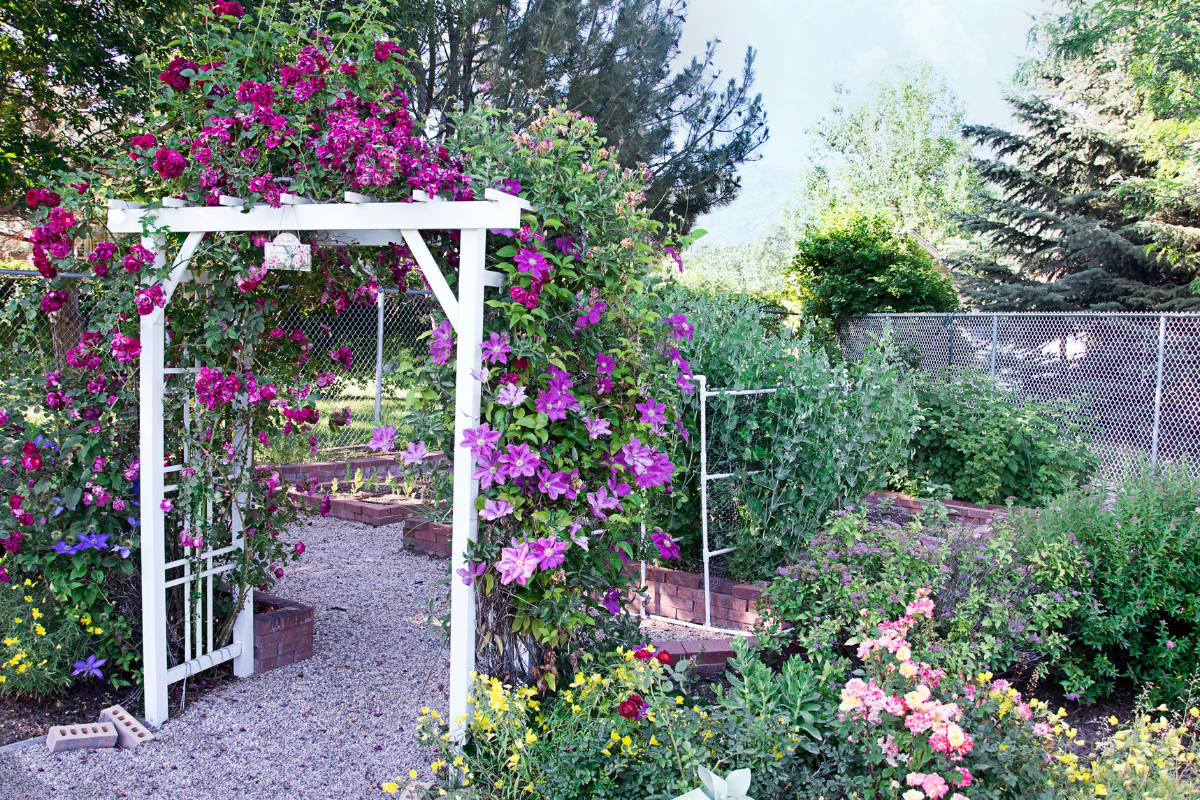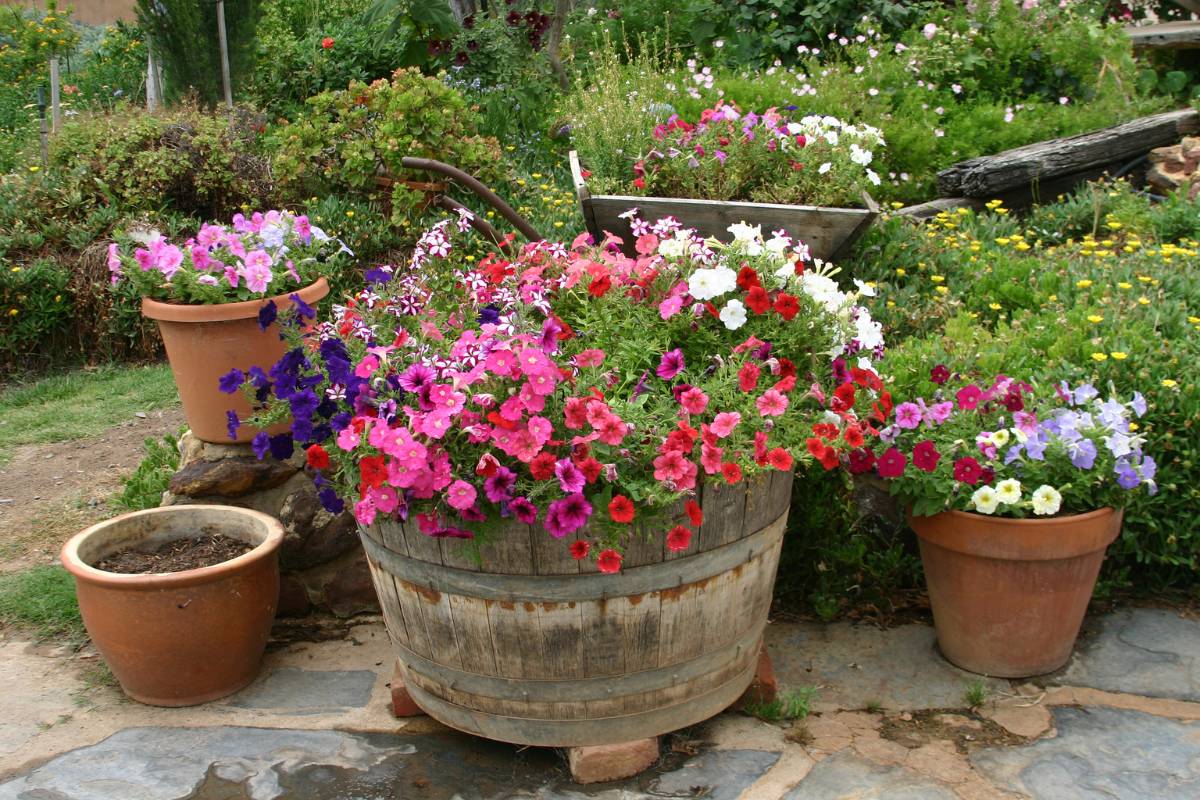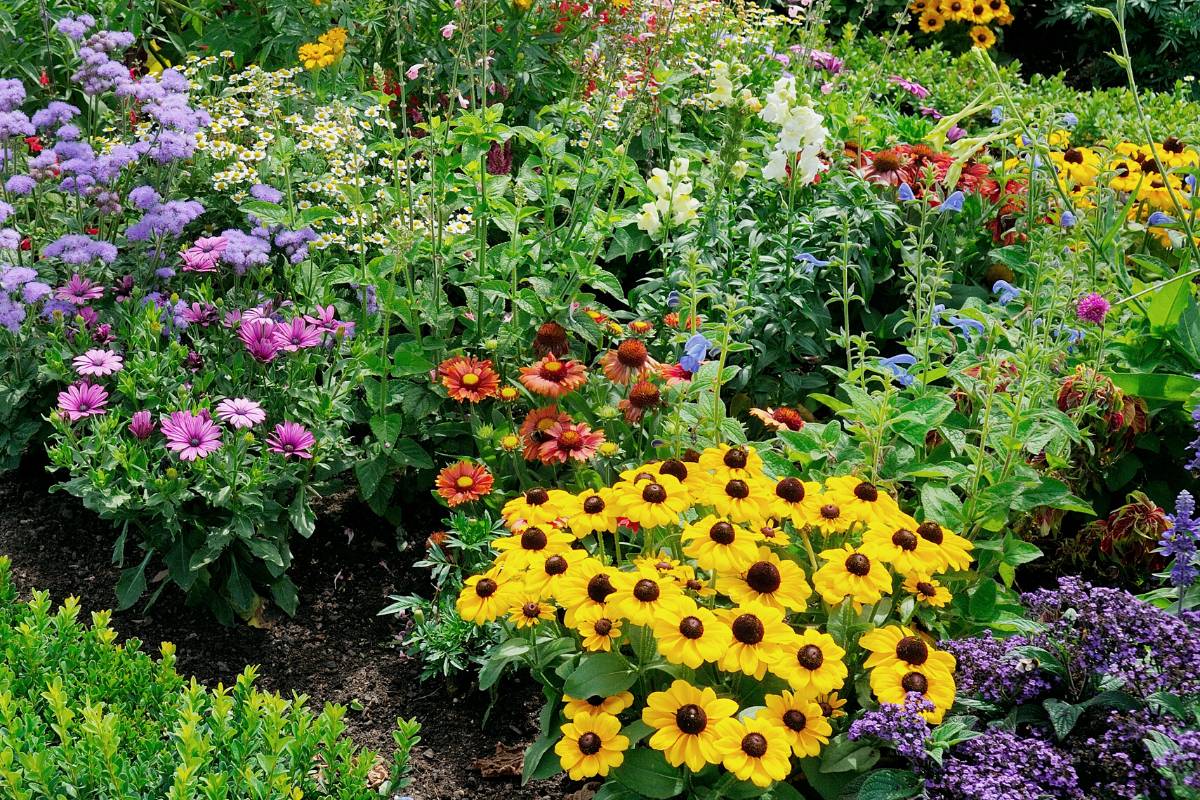What three words spring to mind when you think of a traditional cottage garden? Maybe wild, floral, and romantic? Colourful, fragrant and pretty?
Creating a charming English style cottage garden full of flowers and aromatic herbs is achievable in any space. Read on for design and planting ideas to help you get the look.
What is a cottage garden?
The history of cottage gardens stretches back to when people started growing flowers alongside medicinal herbs and vegetables. During the Elizabethan period, prosperous cottage dwellers acquired enough assets to change their habits from growing plants purely for practical use, to plant for aesthetic purposes as well. More beautiful flowers and fewer medicinal and edible plants were grown around the cottages.
Today, a cottage garden is usually a blend of colourful flowers of varied heights mixed in with different aromatic plants and edibles. The traditional English cottage garden often has a chaotic look to it, which creates its wild personality. But achieving this look through the seasons actually takes planning and structure to get just right. It’s important to note that the ‘cottage garden’ style is constantly being reinvented.
Design
At its simplest a cottage garden is any outdoor space densely packed with flowering plants. This style can be recreated in any space, from a large suburban block to a container. There aren’t any rules you need to stick to when designing your outdoor space, but there are a few tips and tricks to help achieve the cottage garden style.
- Cover all the soil
Avoiding areas of bare soil is important in traditional cottage gardens. This is what gives a space the wild and charming aesthetic. Find out the mature size of plants and plan to fill garden beds without any large gaps. Fill temporary gaps in planting with spring bulbs, containers or ornaments.
- Winding paths
Cottage gardens often have a mysterious and magical charm. Creating a path that you can’t see the end of achieves this unbridled energy and an informal feeling. If you already have straight paths, make sure they lead to a focal point such as a seating area, water feature or a stunning rose arch.
- Plant to soften hard landscaping
Planting to cover fences, retaining walls and the edges of paths is a great way to achieve an untamed garden look. Lobelia and nasturtium, for example, are sprawling plants that will tumble over the edge paths while adding a bright pop of colour at ground level.
- Add vertical height
Many cottage garden plants are low-growing or mounding annuals and shrubs. Plants with vertical flower spikes, such as lily, foxglove, hollyhock and delphinium, provide a contrast and act as accents. Plant them at the back of borders to bring much-needed height to a planting design.
Vertical height can also be achieved through garden structures like tripods and arches. Climbing roses and sweet peas, for example, fill arches or tripods with colour while adding a divine floral scent to your outdoor space.
- Accents and features
Features such as bird baths, sundials and statues add interest and structure in busy garden beds. These are perfect to add at the end of a path to provide a focal point, and they become the main garden features during winter, when there are fewer flowers blooming.
- Repeat colours and plants
While cottage gardens do have a busy look, picking a few key colours will help tie the whole garden together, giving it a cohesive look. The same goes for plants. Picking one plant to repeat in each space of your garden or pots will tame the chaotic look slightly and add unity to the design.
Planting
There are plenty of traditional cottage plants that will thrive in Australian conditions as long as you provide them with good soil and make sure they get adequate water. Mixing annuals and perennials is the traditional approach to cottage garden planting. Including self-seeding annuals can reduce maintenance, as each year more and more plants pop up without you lifting a finger!
Traditionally, cottage gardens incorporated fragrant herbs, some vegetables and at least one fruit tree alongside flowering plants. While these may not be required for sustenance, if room permits include a few herbs or veggies on the planting list for their fresh foliage and aroma.
You don’t have to stick to traditional English cottage plants either. There are many beautiful native Australian, South African and Mediterranean plants that can be used to create a wild and rambly feel.
Some plants suitable for cottage gardens include:
- Low-growing: alyssum, candytuft, brachyscome, armeria, catmint, lobelia and viola.
- Medium height: cosmos, snapdragon, sweet william, lavender, cornflower, Californian poppies, nigella, phlox, pincushion flower, yarrow and marigold.
- Vertical accents: delphinium, hollyhock, foxglove, lupin, dahlia and lily.
- Climbers: sweet pea, nasturtium, clematis, rose and thunbergia.
- Herbs: parsley, rosemary, thyme, oregano, tarragon, marjoram, coriander, dill, tansy, wormwood, chamomile and lavender.
- Edibles: potatoes, carrots, radishes, turnips, beetroot, gooseberries, raspberries, fennel, lettuce, silverbeet, kale, broccoli, cauliflower, rocket, and mustard greens.
With a little planning put into layout, structures, features and plants, it’s easy to achieve a cottage-style garden space. Ultimately, if a plant makes you happy, you can make a place for it in your cottage garden.









